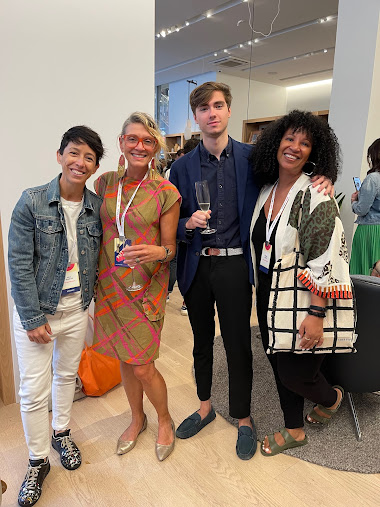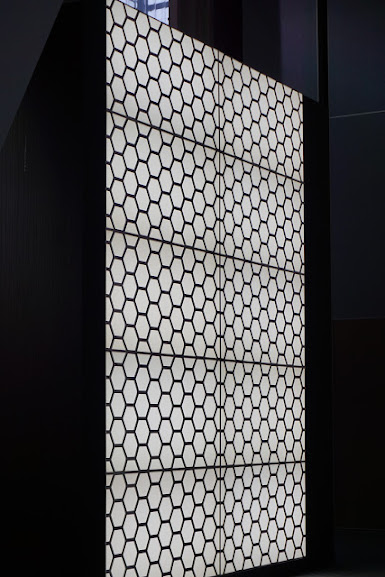Recap of The Annual Future of Home Conference by Miles Stephenson
The Future Of Home Conference Recap,
The Evolution of Design
by Miles Stephenson
On Monday, September 12th, I covered the 2022 Future of Home Conference at the Chelsea Industrial space in New York City. The event was a nexus for people across the design industry — from architects to wellness consultants to interior designers — while incorporating cutting-edge technology like cryptocurrency and virtual interior designing and social trends like holistic practices and sustainability to better meet the needs of their clients in the future of design. Brizo, HunterDouglas, Parachute, and Kohler, some of the biggest home appliance and furnishing companies in the world, sponsored the event and supported a panel of inspiring speakers.
One of the first speakers was author of New York Times bestseller Financially Fearless and venture capitalist Alexa von Tobel who spoke about the entrepreneurial mindset as well as the state of the market following Covid-19. Tobel is a managing partner of Inspired Capital, a $500 million venture capital firm focusing on startups and tech founders, and argued that entrepreneurs can bounce back in an economic downturn. Citing the famous quote “never misuse an opportunity,” Tobel said the economic situation following Covid can allow small business owners to make the changes they’ve already been needing to make: this time gives them “perfect air cover” to change things up about how their business is run.
Later, carpenter Erik Curtis and interior designer Adair Curtis spoke about their new Netflix series Instant Dream Home in which they execute 12-hour home transformations for unsuspecting families. The moment the families leave their homes, celebrity designers Erik and Adair sneak in and get to work, tearing down walls and gutting rooms to install prefab kitchens and unique spiraling staircase bookshelves. The challenge of the show is the ever-encroaching deadline, which often forces them to make daring, high-speed installations without knowing if the house foundations can support such designs. In the end, however, the families seem elated to find their homes transformed into elegant and dramatic spaces fit to their personal aesthetics and needs.
We also heard from interesting duo Caleb Anderson and DeAndre DeVane, wellness enthusiasts and co-founders of design community Well-Designed who spoke about the status of stress and pressure from working in the industry. For the talk, they brought in Columbia University clinical psychologist and wellness consultant Amanda Hilton who cited interior designers ranked #2 (just behind nurses) in the occupations most likely to experience client-side stress and burnout. To remedy this, Caleb, DeAndre, and Amanda have devised workshops and programming that combine empirical science, holistic practices, yoga, and mindfulness to better support designers with a like-minded, health-oriented community. Their workshops are devised to lower anxiety and stress, improve quality of sleep and social interactions, and give designers necessary tools to succeed on time-sensitive, high-pressure projects. They also designed a Wellness Lounge at the event, which was a fantastic combination of professional workspace and spa retreat. They offered an ayurvedic tea bar with cacao vitamin bowls and essential oils. There were trickling pools with lily pads and mirrored floats beside planted ferns and greenery which hung from the ceiling. The air smelled of flowers and essential oils. Just walking into that lounge was relaxing to the senses, and is bound to reduce stress making one predisposed to enjoying their environment while still working productively in their creative and professional projects.
Another fascinating speaker was Gala Magriñá who incorporates principles of feng shui, natural lighting and circadian rhythm, as well as the emotional impact of color theory to craft worlds for her clients and their families which not only meet their aesthetic considerations but also support their immune systems and spiritual health. In a wellness industry often rife with meaningless buzzwords like “sustainability” and “spiritual energy,” Gala’s talk was a fresh change of pace with her concrete, actionable practices of aesthetics based in empirical science. She seems to be the future of holistic integration in interior design. Inspired by the meditations of Eckhart Tolle, Gala integrates holistic practices into her design principles. One example she gave was contrasting a dining room painted a very deep crimson red and lit with lamps with a dining room with natural wood furnishings and floor-to-ceiling windows to let in an abundance of natural light. Gala talked about how the dark red of the first room could predispose the families of that space to anger or disagreement and how the lack of natural light failed to support their health. Meanwhile, the second space worked to sooth with softer, natural materials and an abundance of sunlight which increases not only quality of sleep and the production of hormones, but also makes people feel happier and more energetic.
All in all, it was a thorough two days of design-infused information given by experts in their respective field, and to a packed audience which seemed to lure professionals from all segments of the industry.
about guest author, Miles Stephenson: Miles is a screenwriter, film critic and recent graduate of Columbia University current working as a production assistant in NYC. He watches and reviews a new film daily at The Vernon Show.













